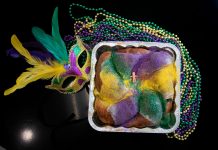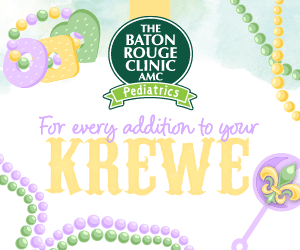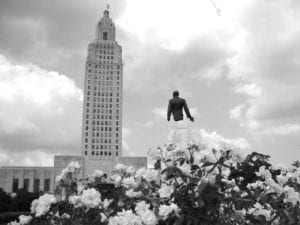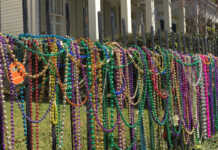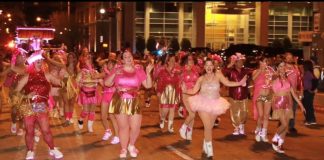The final weekend before Mardi Gras is here, meaning crowds of people will be descending upon downtown and Spanish Town to partake in the last of the festivities. To some Spanish Town may not be your idea of the perfect neighborhood. It’s full of quirky, old houses that are adorned with a few too many flamingos and confusing one-way streets. But for us it’s our haven. I previously shared about how we’ve grown to love it even more now that we are parents. The history around every corner is part of what I love about the area. We’ve even dug up artifacts that date all the way back to the Civil War in our front yard! So for those that will be visiting downtown this weekend, here’s a little info about how the neighborhood has evolved over a couple hundred years.
The first people residing in the area were Native Americans because of the high ground above the Mississippi River. You can still find a ceremonial mound near the back of Arsenal Park, to the east of the Capitol. As European settlement began to spread, Baton Rouge remained in the area known as West Florida, Spanish territory. Fort San Carlos was established to protect their area. In 1805 the area just east of Fort San Carlos was used to resettle Spanish families and help defend the fort. Spanish Town Road is actually the public road that lead from the fort! The area later became possession of the United States, and the arsenal and barracks you see today began construction. *Check out the marker for the area at the corner of Spanish Town Road and 5th Street, still visible today.
During the Civil War many homes were abandoned, destroyed, or used for firewood. Today there are only a few homes remaining from that era. Following the war the neighborhood was rebuilt with a collection of shot-gun homes, cottages and later the bungalow. Spanish Town had its greatest growth between the 1890’s and 1920 thanks to LSU: rapidly increasing property values as students and teachers added to the population of the area. The university later moved locations, and the neighborhood had its ups and downs as populations shifted.
More recently Spanish Town has been known for its eclectic style. The flamingo was adopted as the unofficial mascot and the motto, “poor taste is better than no taste at all.” In 1981 the first Spanish Town parade rolled through the neighborhood as the residents celebrated their differences. It has been an annual tradition ever since, becoming the largest parade in Baton Rouge with the flamingo front and center of the festivities.
If you are around the area be sure to keep an eye out for all the historical signs throughout. You can enjoy the sights and festivities, catch a few beads and even get a history lesson!
FYI for this weekend: For families coming downtown there is an ‘Alcohol Free Zone’ for the Spanish Town parade located on Convention Street, between 5th Street and 7th Street. There is also a Mardi Gras Festival starting at 10am at North Boulevard Town Square that is appropriate for all ages!
You can find an in-depth history of Spanish Town at the Spanish Town Civic Association website.


